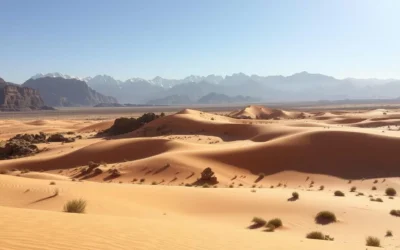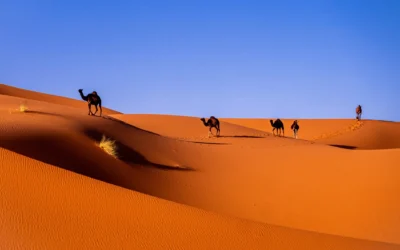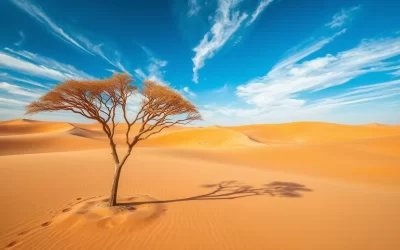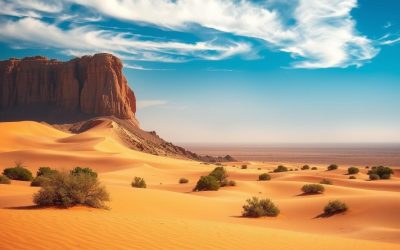✓ Accommodations ✓ Flights ✓ Rental Cars
Western Sahara is a unique territory with a rich linguistic heritage. Its vast desert landscapes and sparse population make it a fascinating place to explore. The region’s history has shaped its language use, blending Arabic and indigenous influences. You’ll find that Hassaniya Arabic is the native tongue for many residents, while Moroccan Arabic dominates urban areas.
This area has a population of up to 584,000 people, with Standard Arabic spoken by around 287,000 individuals. The region’s political history has also played a role in its linguistic evolution. For example, Spanish and French have left their mark on the local dialects. Code-switching between Hassaniya Arabic, Spanish, and Standard Arabic is common in daily conversations.
Understanding the languages of this territory offers insight into its cultural diversity. Whether you’re exploring its history or connecting with its people, the linguistic landscape is a key part of the experience.
Introduction to Western Sahara: Geography, History, and Politics
The vast desert landscapes of this region hold a story of resilience and conflict. Spanning over 272,000 square kilometers, this area is a mix of coastal deserts and inland expanses. Its unique geography has shaped its history and the lives of its people.
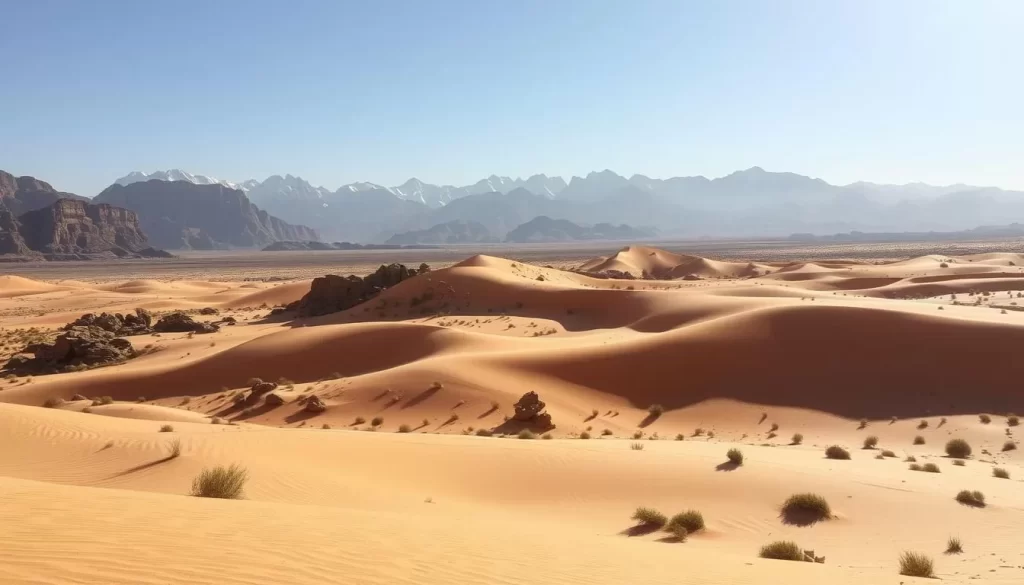
An Overview of the Region
This territory is home to a population of approximately 632,200 people, with nearly 40% living in Laayoune. The community here is diverse, with a blend of indigenous Sahrawis and Moroccan settlers. The region’s status as a contested area has influenced its cultural and political identity.
Phosphate mining, which began in Bu Craa in 1972, plays a significant role in the local economy. The conveyor belt transporting phosphate stretches over 60 miles, showcasing the region’s resource potential.
Understanding the Contested Political Landscape
The political status of this area is complex. It is divided between Morocco and the Sahrawi Arab Democratic Republic (SADR), which is recognized by around 70 countries. The dispute dates back to 1957 when Morocco claimed the territory.
“The struggle for self-determination continues to define the region’s political reality.”
In 1991, a cease-fire agreement was reached, but the conflict remains unresolved. The Sahrawi people, estimated at 74,000, continue to advocate for their rights and cultural identity.
| Key Facts | Details |
|---|---|
| Total Area | 272,000 sq km |
| Population (2024) | 632,200 |
| Phosphate Mining Start | 1972 |
| Countries Recognizing SADR | Approx. 70 |
Understanding this region’s geography and politics offers a deeper insight into its challenges and opportunities. Its story is one of resilience, resourcefulness, and hope for the future.
A Journey Through the Linguistic History of Western Sahara
The linguistic history of this region is a tapestry woven with indigenous roots and colonial influences. Over centuries, the languages spoken here have evolved, shaped by the people who called this land home and the forces that sought to control it.
Early Inhabitants and Indigenous Influences
Long before colonial powers arrived, indigenous tribes thrived in this arid landscape. Their languages laid the foundation for the dialects spoken today. These early tongues were deeply tied to the land, reflecting the nomadic lifestyle of the people.
As communities grew, so did their linguistic diversity. The blending of these indigenous languages created a unique cultural identity. This heritage remains a vital part of the region’s story.
The Impact of Spanish Colonization
Spanish colonization brought significant changes to the linguistic landscape. Spanish became a dominant language, influencing local dialects and daily life. This period also introduced new cultural elements that blended with indigenous traditions.
Even after Spain’s withdrawal in 1976, the Spanish language left a lasting mark. Today, it is still used in certain contexts, reflecting the region’s complex history.
Political movements, such as those led by the Polisario Front, have also shaped language use. The establishment of the Sahrawi Arab Democratic Republic highlighted the importance of language in cultural and political resistance.
Understanding this linguistic journey offers insight into the region’s resilience and adaptability. It’s a story of survival, identity, and hope for the future.
Western Sahara: Official and widely spoken languages
The languages of this region reflect its complex history and political dynamics. Designated as official, Hassaniya Arabic and Standard Arabic dominate daily life. These choices mirror the area’s cultural identity and its ties to the arab democratic movement.
Political events, like the stalled referendum, have shaped language policies. Originally planned for 1992, the referendum remains unresolved, leaving language use in flux. This uncertainty impacts how communities communicate and preserve their heritage.
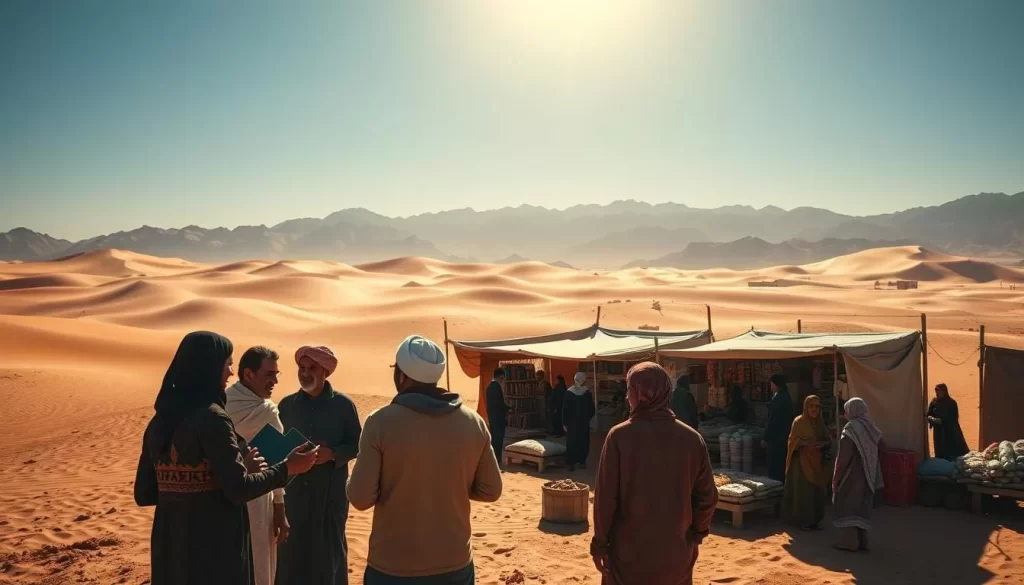
The cease-fire agreement of 1991 also plays a role. While it halted conflict, it didn’t resolve language disputes. This has led to a blend of dialects, with Moroccan Arabic gaining ground in urban areas.
Population shifts further influence language trends. For example, Laayoune, the largest city, is home to two-thirds of the region’s people. This concentration affects how languages evolve and spread.
Despite these challenges, local communities work to maintain their linguistic roots. From Hassaniya Arabic to indigenous dialects, these languages remain a vital part of their identity. Understanding this interplay offers a deeper insight into the region’s resilience.
The Role of Arabic: Hassaniya Arabic and Its Variants
Hassaniya Arabic stands as a cornerstone of cultural identity in this region. With over 5.6 million speakers across several countries, it is a vital part of daily life and communication. Its unique phonemic inventory and regional dialects reflect the area’s rich heritage.
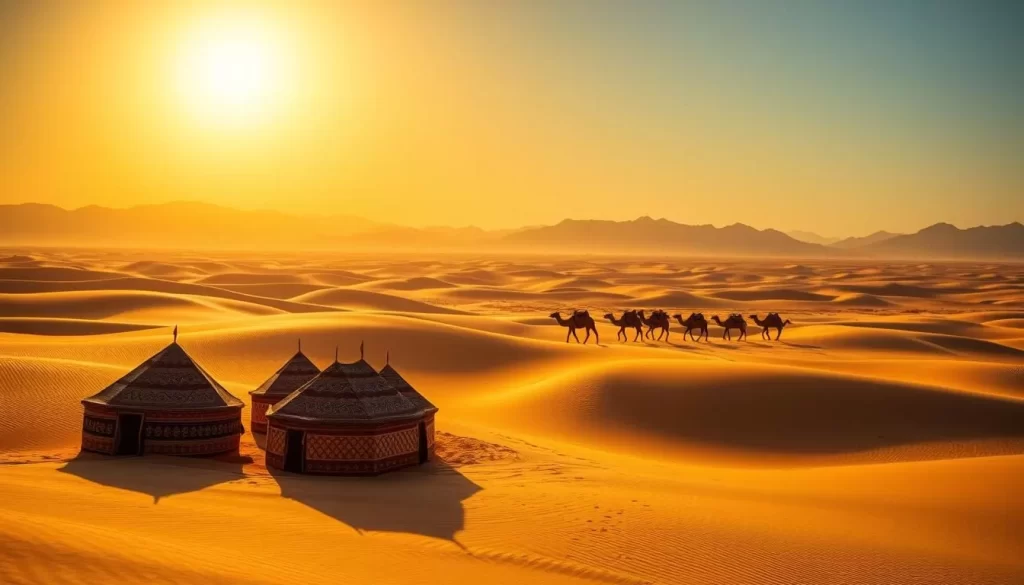
Exploring Hassaniya Arabic
This dialect has evolved over the years, influenced by indigenous languages like Zenaga-Berber and Pulaar. Its two primary variants, Nemadi and Imraguen, showcase the diversity within the language. These differences highlight the adaptability of Hassaniya Arabic to various cultural contexts.
Political claims and sovereignty disputes have also shaped its use. For example, the state’s claim over the language has influenced education and media practices. This has led to a blend of traditional and modern influences in how the language is taught and preserved.
On both sides of the political divide, Hassaniya Arabic serves as a marker of identity. It connects communities and reinforces their shared heritage. This role is particularly evident in state communications and cultural expressions.
Understanding Hassaniya Arabic offers insight into the region’s resilience and adaptability. It’s more than just a language—it’s a symbol of unity and continuity in a complex landscape.
Berber and Indigenous Languages: Cultural Roots and Revival
The Berber and indigenous languages of this region tell a story of resilience and cultural pride. These languages, deeply tied to the land and its people, have endured centuries of change and conflict. Today, they stand as symbols of identity and heritage for local communities.
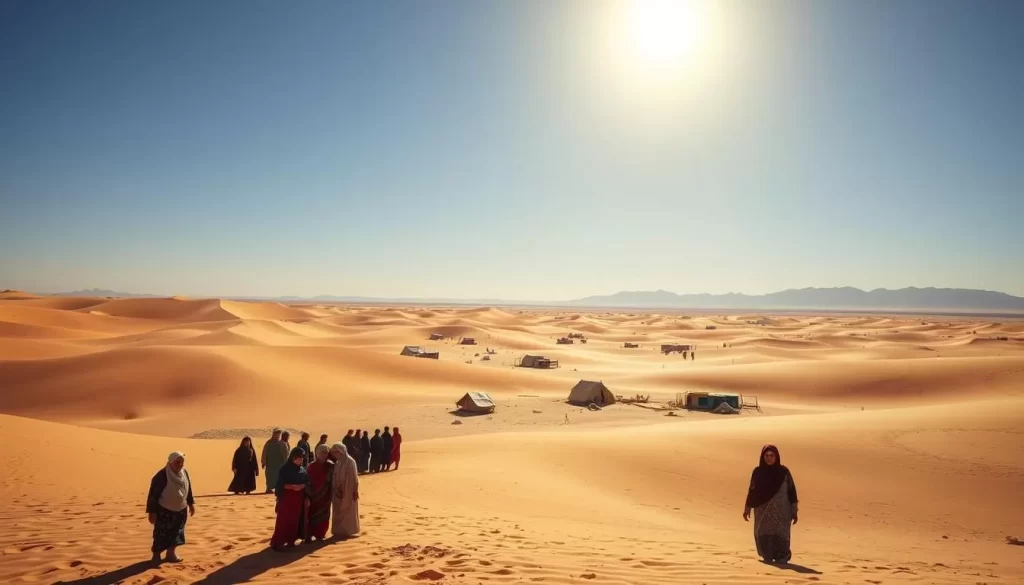
Berber languages, such as Tamazight, are spoken by approximately 30% of the population. These dialects have roots that stretch back to the region’s earliest inhabitants. Despite periods of war and political upheaval, they have survived, thanks to the efforts of local communities to preserve their linguistic heritage.
Recent cease-fire conditions have created a safer environment for language revival. This has allowed communities to focus on their right to preserve and promote their native tongues. Initiatives to teach Berber languages in schools and media have gained momentum, reflecting a growing level of cultural revitalization.
Here are some key aspects of this linguistic revival:
- Educational programs teaching Berber languages to younger generations.
- Media outlets broadcasting in indigenous dialects to reach wider audiences.
- Community events celebrating linguistic diversity and cultural heritage.
The cultural and historical significance of these languages goes beyond communication. They are a vital part of the region’s identity, connecting people to their ancestors and traditions. To learn more about the Berbers and their rich heritage, visit this resource.
Understanding the revival of Berber and indigenous languages offers insight into the region’s resilience. It’s a story of hope, pride, and the enduring power of cultural roots.
Media and Communication: Language Use in News and Broadcasts
Media in this region plays a pivotal role in shaping public opinion and cultural identity. From state-operated outlets to independent voices, the language choices reflect the area’s complex history and political dynamics. Along the border and coast, broadcasting serves as a tool for both information and influence.
State-Operated Media Outlets and Their Language Choices
State-controlled media, such as RTM Laayoune, dominates the airwaves. These outlets primarily use Hassaniya Arabic and Standard Arabic, aligning with the government’s cultural policies. The Moroccan press agency, Maghreb Arab Press, also plays a significant role in shaping narratives.
In February 2006, the government relaxed state control, allowing new radio and TV stations to emerge. This shift introduced more diversity in language use, with Spanish and French gaining traction in urban areas. Despite these changes, state media remains a powerful force along the coast and desert regions.
Independent Voices in the Polisario Front
Independent media, particularly those associated with the Polisario Front, offers a counter-narrative. These outlets often use Hassaniya Arabic and Spanish, reflecting the region’s historical ties to the Spanish Sahara era. Broadcasting from refugee camps, they focus on cultural preservation and political advocacy.
Despite challenges, independent journalists continue to push for press freedom. As of 2019, Morocco ranked 135th in the Worldwide Press Freedom Index, highlighting ongoing tensions. For more insights into the media landscape, visit this resource.
| Media Type | Language Used | Primary Audience |
|---|---|---|
| State-Operated | Hassaniya Arabic, Standard Arabic | Urban and coastal regions |
| Independent | Hassaniya Arabic, Spanish | Refugee camps and border areas |
The media landscape here is a blend of tradition and modernity. From the century-old roots of Spanish influence to the current political dynamics, it continues to evolve. Understanding this interplay offers a deeper insight into the region’s resilience and adaptability.
Language and Identity: Cultural and Political Dimensions
Language shapes more than just communication; it defines identity and unity in contested regions. In areas marked by political divides, it becomes a powerful symbol of cultural resilience and shared heritage.
In this region, language serves as a cultural service, connecting communities across borders. It also acts as a political tool, reflecting the complexities of international disputes. The physical berm, a symbol of division, further highlights how language can both unite and separate.
Language as a Marker of National Unity
Language plays a crucial role in fostering national unity, especially in regions with contested territories. It helps communities maintain their identity amidst political challenges. For example, the berm not only divides land but also influences linguistic borders.
Here’s how language unites communities:
- It preserves cultural heritage in the face of external pressures.
- It serves as a tool for resistance and advocacy in political disputes.
- It bridges gaps between diverse groups, fostering a sense of belonging.
In the world of contested territories, language is more than a means of communication. It’s a reflection of history, identity, and the ongoing struggle for recognition. For more insights into how language shapes political dynamics, visit this resource.
“Language is the roadmap of a culture. It tells you where its people come from and where they are going.”
Understanding the cultural and political dimensions of language offers a deeper insight into the region’s resilience. It’s a story of hope, unity, and the enduring power of shared heritage.
Linguistic Diversity in Education and Community Life
Education and community programs play a vital role in preserving linguistic diversity in this region. From bustling cities to quiet rural places, efforts are underway to protect and promote the rich heritage of local languages. These initiatives bridge the gap between tradition and modernity, ensuring that linguistic identity remains strong.
Educational Initiatives and Community Programs
In urban centers, schools and universities are at the forefront of language preservation. Programs often include bilingual education, teaching both indigenous dialects and widely spoken languages. This approach helps students connect with their roots while preparing them for a globalized world.
Community-driven projects also play a crucial role. In rural areas, grassroots movements focus on teaching traditional languages through storytelling and cultural events. These efforts are often compared to guerrilla tactics, as they adapt to local needs and resources.
Here are some key initiatives:
- Language workshops in cities, offering classes in indigenous dialects.
- Cultural festivals in rural places, celebrating linguistic heritage.
- Collaborative projects between schools and communities to develop language resources.
Extracurricular programs are another important tool. Activities like fishing trips or storytelling sessions provide informal settings for language learning. These programs are especially impactful in refugee camps, where maintaining cultural identity is a priority.
“Language is not just a tool for communication; it’s a bridge to our past and a guide to our future.”
The contrast between city life and rural traditions highlights the challenges of language preservation. While urban areas benefit from modern resources, rural places rely on community-driven efforts. Together, these approaches create a balanced strategy for sustaining linguistic diversity. To learn more about Africa’s linguistic heritage, visit this resource.
Understanding these initiatives offers insight into the resilience of local communities. Whether in a bustling city or a quiet rural place, the commitment to preserving language traditions is a testament to cultural pride and unity.
Conclusion
The region’s linguistic diversity is deeply tied to its history and natural resources. Phosphate deposits and oil prospects play a significant role in shaping its economic and political landscape. These resources influence governance and language policies, impacting how communities preserve their heritage.
Institutions here continue to shape language use, reflecting the area’s complex identity. From indigenous dialects to widely spoken variants, the linguistic tapestry remains a vital portion of cultural resilience. Efforts to maintain this diversity highlight the region’s adaptability and strength.
Understanding the interplay between resources, governance, and language offers valuable information. It reveals how historical evolution connects to current challenges and hopes for the future. To explore more about this unique territory, visit this resource.
This region’s story is one of resilience, shaped by its people and their commitment to preserving their identity. Its linguistic heritage remains a testament to cultural pride and unity.
The above is subject to change.
Check back often to TRAVEL.COM for the latest travel tips and deals.

